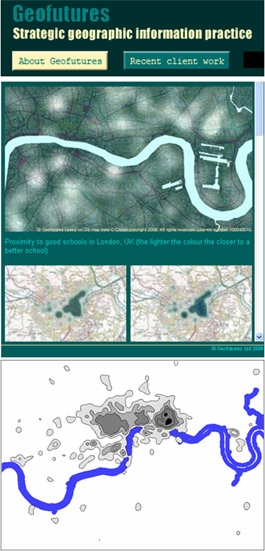CASA has been involved in retailing projects since its inception in 1996 when it began its Town Centre Definition Project for central government.

This project led to a method for defining the boundaries of any UK town centre so that statistics on detailed employment, turnover and floorspace could be aggregated for such units, thence disseminated to the wider public. This represented a new ‘census of distribution’ and was in direct demand to lobbying for such statistics by stakeholders. Currently the Census has been rolled out for England and Wales by GeoFutures, a spin-off from CASA, for the Department of Communities and Local Government (DCLG). The original project is archived in the Town Centres Project web pages and the new system is being piloted in Google Maps and hangs off the GeoFutures web site.
The current project in CASA involves the dynamics of retailing at the level of town centres as now used by DCLG. We are examining retail change in London from 1971 to 2001 taking the 1971 census of Distribution for which we have the original archived data and constructing a time series of change converging with the DCLG data which we have available in yearly periods from 2000.
This is a unique project in which we have good data at the start and end dates but which are slightly inconsistent in terms of scale and aggregation but little data in between. We are constructing a methodology which will fill in the missing gaps using various qualitative and quantitative synthesis.
Once we have constructed this series, we will be in a position to classify the way town centres and retail clusters have changed over the last 30 or more years, thus providing a picture of the way retailing has changed at the level of physical and functional morphology.
We are also working with Think London on the economic geography of inward investment in the capital. We are exploring ways in which geographic information might be deployed in order to help analyse and represent key factors underlying the location choices of international companies seeking to relocate to the capital. We are using GIS to inform the consultancy services that Think London has provided to key clients. This involves spatial analysis of a wide range of geographic factors including: workforce distribution, commuting patterns and business sector clusters. From this we are building a framework of geospatial data and analysis to inform and influence business development.
 Close
Close

